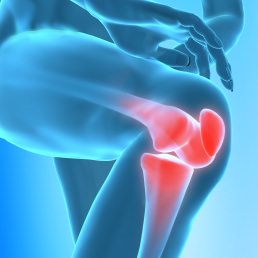The Ayurvedic Approach to Healthy Joints (part 1)
Date Posted:10 January 2011

Joint disorders affect many of us. 80% of individuals over 50 years of age reportedly have joint concerns of one type or another. Reasons range from obesity to heredity. Improper use of the joints, overexertion, stress, diet and lifestyle contribute to the problem.
The Ayurvedic Perspective
Ayurveda identifies two major types of joint problems.
- 1: Vata-Related Joint Problem is associated with poorly nourished joints or low bone density and overall weakness in the joints. This kind of problem starts with some discomfort, a cracking sound, and if not taken care of, results in eventual immobilization of the joints. Because the bone is not getting the nourishment it needs, it starts to degenerate.
- 2: Ama-Related Joint Problem is associated with a toxic overload in the joints, and is the result of too many toxins in the body. As ama (the sticky, toxic waste-product of incomplete digestion) accumulates in the joint, it first creates stiffness and heaviness. If it stays there for a long time, the joint can become swollen and painful. Damp, cold weather can aggravate this type of joint problem.
1: Vata-Related Joint Problem
When Vyana Vata, which is the aspect of Vata that governs the circulation and nerve impulses, is aggravated, the first type of joint problem can occur. The person's circulation, metabolism, and ability to absorb food are weakened; as a result, the bone tissue does not receive enough nourishment and eventually starts to degenerate.
The imbalance in Vyana Vata and the weakened circulation, metabolism and absorption create a drying effect on Shleshaka Kapha, the subdosha of Kapha that governs lubrication of the joints. When this happens, the joints are not lubricated properly and this creates the discomfort, cracking sound, and diminished flexibility.
Foods and Lifestyle Habits to Pacify Vata
Include all six tastes (sweet, sour, salty, bitter, astringent, and pungent) in your diet. Favor the sweet, sour, and salty tastes, as these help pacify Vata dosha, and eat less of the bitter, astringent and pungent foods. Other healthy foods to include in the Vata pacifying diet are grains such as quinoa, rye and amaranth, cooked in water to which a little Ghee has been added; freshly cooked organic vegetables; split mung dhal soup; and sweet, organic, juicy fruits.
It's important to eat a diet rich in calcium, including high-quality organic milk and vegetables such as spinach, kale, asparagus, and root vegetables cooked with Calming Spice Mix.
Following a Vata-pacifying daily routine:
- Go to bed before ten o'clock at night, and rise before six a.m.
- Avoid too much stimulating activity at night, such as watching television right before bed.
- Eat your main meal at noon, and eat a light, nourishing dinner early in the evening.
- Engage in some mild exercise such as walking for half an hour a day.
- Practice Transcendental Meditation® on a regular basis to dissolve stress and calm your mind.
All of these things together will soothe Vata dosha and prevent and correct Vata-based joint problems. A daily ayurvedic oil massage is recommended to prevent these kinds of joint problems, because it helps settle Vata dosha. 
Herbs that Heal
The herbal formula for this type of joint problem has a special name in ayurveda, called santarpana, which means nurturing. Based on this nurturing theory of santarpana, Maharishi Ayurveda has developed a precise combination of nourishing herbs called Osteo Relief that provides nourishment to bones and joints and supports the bone tissue and Shleshaka Kapha.
If you are taking a calcium supplement, The Council suggests adding the Calcium Support to help your body absorb calcium from your diet and from calcium supplements. It's important to avoid caffeine and a highly acidic diet because they increase the excretion of calcium and magnesium in the urine, thus depleting the body's calcium.
This program is most effective in restoring balance to the joints when there is a small amount of malnutrition of the bone and drying of Shleshaka Kapha. If the problem is more severe than that, it is important to consult a physician. Many physicians are now trained in Maharishi Ayurveda, and can help correct the problem by eliminating the problem at its source. Read part 2



